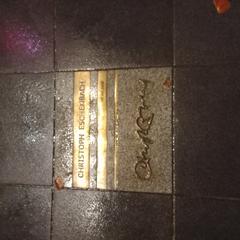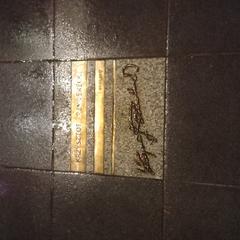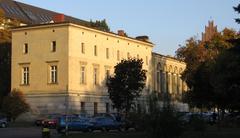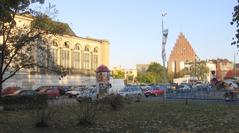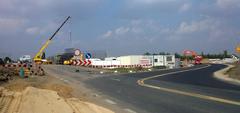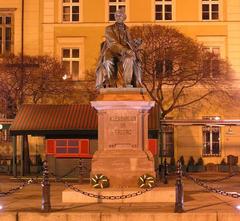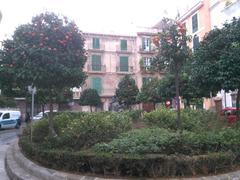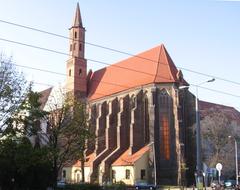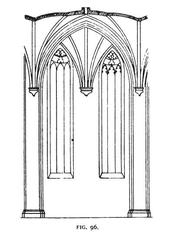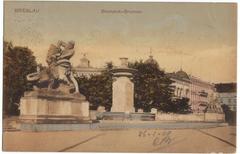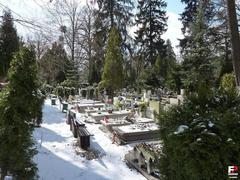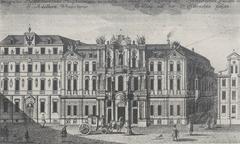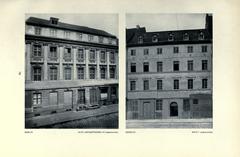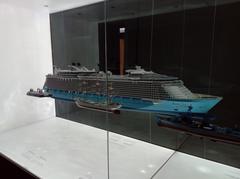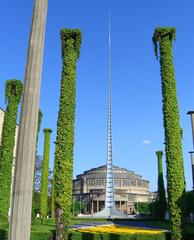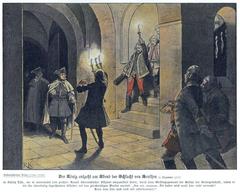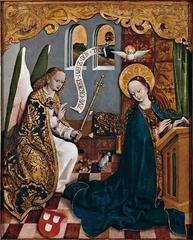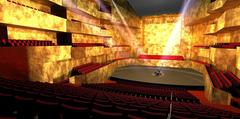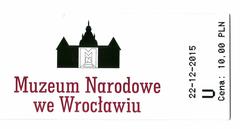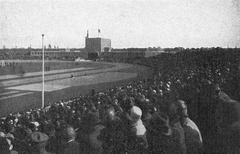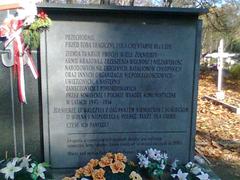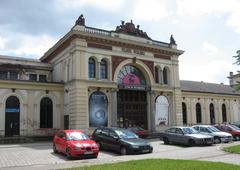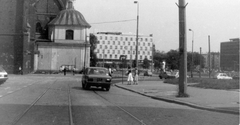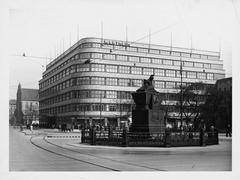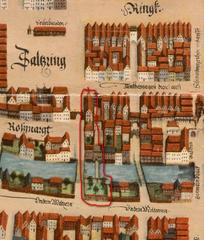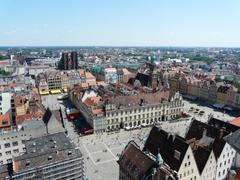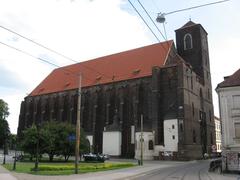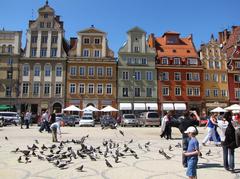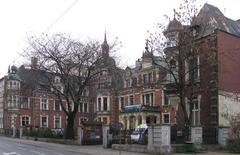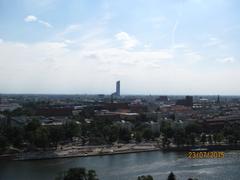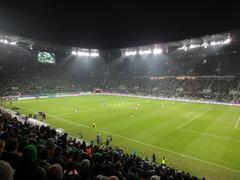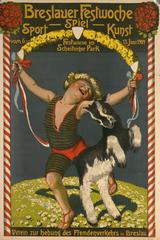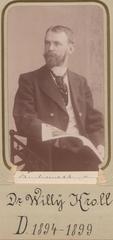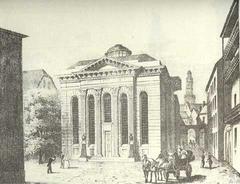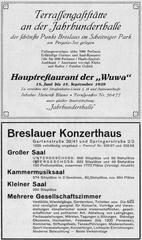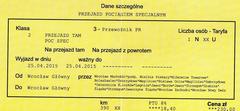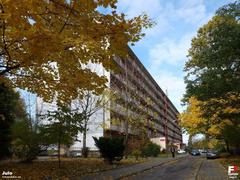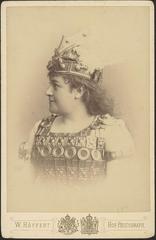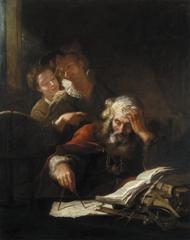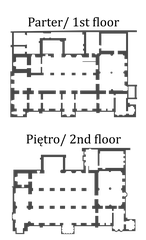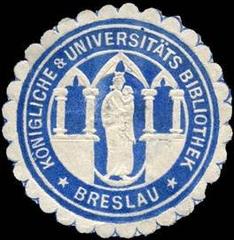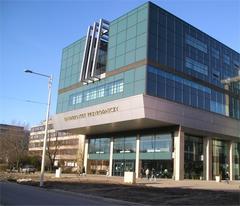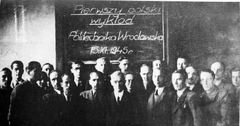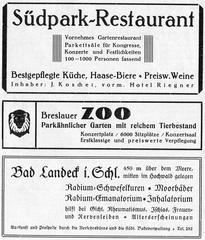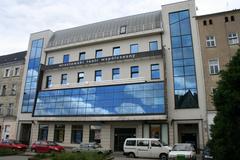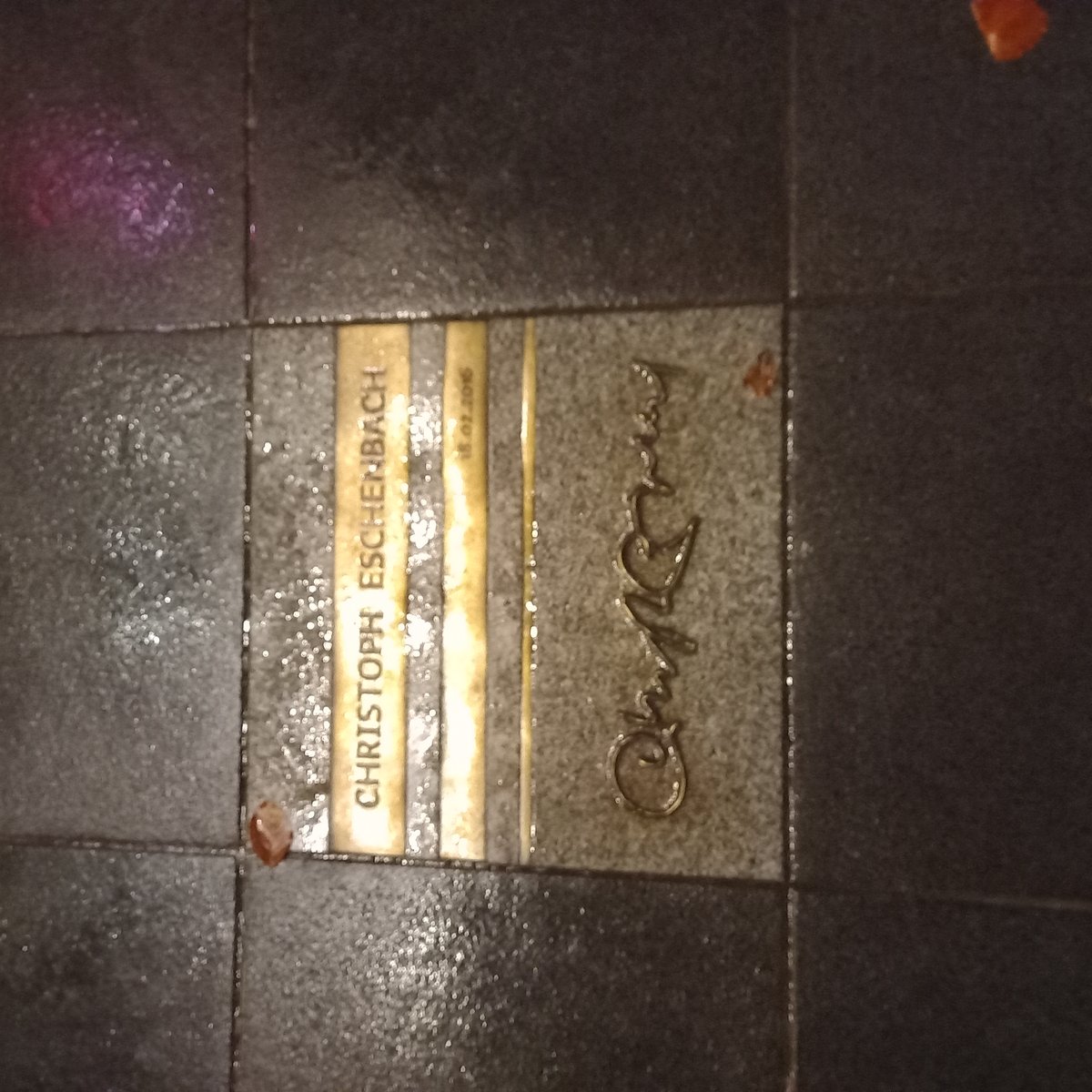
Visiting Plac Wolności in Wrocław: Hours, Tickets, and Travel Tips
Date: 23/07/2024
Introduction
Plac Wolności, or Freedom Square, stands as a testament to the rich historical and cultural tapestry of Wrocław, Poland. This iconic public square is not just a hub for activities but also a symbol of the city’s resilience, cultural vibrancy, and social dynamism. The square’s origins trace back to the early 19th century when it was established as a parade ground for the Prussian military. Over the centuries, Plac Wolności has evolved, witnessing numerous transformations that reflect the broader historical and social changes in Wrocław. From its Prussian beginnings to its role in the interwar period, through the devastation of World War II, the communist era, and the modern democratic renaissance, Plac Wolności embodies the spirit of Wrocław (source). Today, it serves as a vibrant public space hosting a wide range of cultural events, from concerts and art exhibitions to public gatherings, making it a must-visit destination for both history enthusiasts and casual tourists alike.
Table of Contents
- Introduction
- Early Beginnings
- 19th Century Developments
- The Interwar Period
- World War II and Post-War Reconstruction
- Communist Era and Transformation
- Modern Era and Cultural Significance
- Architectural Highlights
- Cultural and Social Impact
- Practical Visitor Information
- Nearby Attractions
- FAQ Section
- Conclusion
Exploring the History and Cultural Significance of Plac Wolności in Wrocław
Early Beginnings
Plac Wolności, originally named “Friedrichsplatz” after King Frederick William III of Prussia, dates back to the early 19th century. During this period, Wrocław was part of the Kingdom of Prussia, and the square served as a central location for military drills and public gatherings.
19th Century Developments
In the mid-19th century, the square underwent significant transformations. The construction of the Royal Palace (Pałac Królewski) in 1750 by King Frederick the Great marked the beginning of its architectural prominence. The palace, originally built as a residence for the Prussian monarchy, later became a symbol of royal authority and power in the region. The surrounding area was gradually developed to include gardens and public spaces, enhancing its appeal as a civic center.
The Interwar Period
Following World War I and the Treaty of Versailles, Wrocław became part of the newly re-established Polish state. During the interwar period, Plac Wolności continued to serve as a focal point for public events and celebrations. The square was a site for various political rallies, cultural festivals, and social gatherings, reflecting the dynamic and evolving nature of Polish society in the early 20th century.
World War II and Post-War Reconstruction
The outbreak of World War II brought significant changes to Plac Wolności. Wrocław, then known as Breslau, was heavily bombed during the war, resulting in extensive damage to the city’s infrastructure, including the square. The Royal Palace and many surrounding buildings were severely damaged or destroyed. After the war, Wrocław was transferred to Poland, and the city underwent a massive reconstruction effort.
Communist Era and Transformation
During the communist era, Plac Wolności was renamed Plac Armii Czerwonej (Red Army Square) to honor the Soviet forces that liberated the city from Nazi occupation. The square became a site for various state-sponsored events, including military parades and political demonstrations. The Royal Palace was restored and repurposed as a museum, showcasing the history and culture of Wrocław and the surrounding region.
Modern Era and Cultural Significance
With the fall of communism in 1989 and the subsequent political changes in Poland, the square was renamed Plac Wolności (Freedom Square) to symbolize the country’s newfound independence and democratic aspirations. Today, Plac Wolności is a vibrant public space that hosts a wide range of cultural events, including concerts, art exhibitions, and public gatherings. The Royal Palace, now part of the Wrocław City Museum, remains a key attraction, offering visitors a glimpse into the city’s rich history and heritage.
Architectural Highlights
Plac Wolności is surrounded by several notable architectural landmarks that contribute to its historical and cultural significance. In addition to the Royal Palace, the square is home to the Wrocław Opera House, a stunning example of neoclassical architecture built in the mid-19th century. The opera house is renowned for its impressive façade and opulent interior, making it a popular destination for both locals and tourists.
Another significant architectural highlight is the National Forum of Music (Narodowe Forum Muzyki), which opened in 2015. Its modern design creates a dynamic contrast with the historical architecture around the square, underscoring Wrocław’s blend of tradition and innovation (National Forum of Music).
Cultural and Social Impact
The square’s transformation over the centuries reflects the broader historical and social changes that have shaped Wrocław. From its origins as a military parade ground to its current status as a symbol of freedom and cultural expression, Plac Wolności embodies the resilience and adaptability of the city and its people. The square continues to play a central role in the cultural life of Wrocław, serving as a venue for public events that celebrate the city’s diverse heritage and vibrant community.
Practical Visitor Information
For tourists visiting Plac Wolności, there are several key points to keep in mind to ensure a memorable experience:
- Visiting Hours and Tickets: Plac Wolności is open to the public 24/7, and entry is free. However, specific events and museum visits may require tickets. Check the Wrocław City Museum website for details on Royal Palace visiting hours and ticket prices.
- Historical Tours: Consider joining a guided tour to learn more about the square’s rich history and its significance in the broader context of Wrocław’s development. Look for tours that include visits to the Royal Palace and other nearby historical sites.
- Cultural Events: Check the local event calendar for concerts, festivals, and exhibitions taking place at the square. These events offer a unique opportunity to experience the local culture and community spirit.
- Museum Visits: Allocate time to visit the Royal Palace and the Wrocław City Museum to explore the historical exhibits and gain deeper insights into the city’s past.
- Architectural Exploration: Take a leisurely stroll around the square to appreciate the architectural beauty of the surrounding buildings, including the Wrocław Opera House.
- Local Cuisine: Enjoy a meal or a coffee at one of the nearby cafes or restaurants, many of which offer outdoor seating with views of the square.
- Accessibility: Plac Wolności is accessible to visitors with disabilities, with ramps and facilities to ensure a comfortable visit for all.
Nearby Attractions
- Market Square (Rynek): A short walk from Plac Wolności, Market Square is one of the largest medieval squares in Europe and a must-visit spot in Wrocław.
- Wrocław Cathedral: Located on Cathedral Island, this stunning Gothic cathedral offers breathtaking views of the city from its tower.
- Panorama of the Battle of Racławice: An impressive 360-degree painting that depicts the 1794 Battle of Racławice, located near the square.
FAQ Section
- Q: What are the visiting hours for Plac Wolności?
- A: Plac Wolności is open to the public 24/7. Specific events and museum visits may have different hours; check the Wrocław City Museum website for details.
- Q: Do I need to buy tickets to visit Plac Wolności?
- A: Entry to the square is free, but certain events and museum visits may require tickets. Check online for more information.
- Q: What are some nearby attractions?
- A: Nearby attractions include Market Square, Wrocław Cathedral, and the Panorama of the Battle of Racławice.
- Q: Is Plac Wolności accessible to visitors with disabilities?
- A: Yes, the square is equipped with ramps and facilities to ensure accessibility for all visitors.
Call to Action
Ready to explore the rich history and vibrant culture of Plac Wolności? Download the Audiala mobile app for more travel tips and updates, and follow us on social media to stay informed about upcoming events and attractions in Wrocław. Don’t miss out on the chance to immerse yourself in the legacy of this iconic public space!
Conclusion
In conclusion, Plac Wolności is far more than just a public square; it is a living monument to Wrocław’s complex and resilient history. From its early days as a military parade ground to its current status as a vibrant cultural hub, the square has continually adapted and evolved, mirroring the city’s journey through time. Visitors to Plac Wolności will find a rich tapestry of history and culture, from the architectural marvels of the Royal Palace and Wrocław Opera House to the bustling events that animate the square year-round. Whether you’re exploring the nearby attractions like Market Square and Wrocław Cathedral, enjoying local cuisine, or simply taking in the architectural beauty, Plac Wolności offers a multifaceted experience that is both enriching and unforgettable. For a deeper dive into Wrocław’s past and to stay updated on upcoming events, be sure to check out the Wrocław City Museum and download the Audiala mobile app for more travel tips and updates.
References
- Exploring the History and Cultural Significance of Plac Wolności in Wrocław, 2024, Author Exploring the History and Cultural Significance of Plac Wolności in Wrocław
- Plac Wolności - Visiting Hours, Tickets, and Historical Significance in Wrocław, 2024, Author Plac Wolności - Visiting Hours, Tickets, and Historical Significance in Wrocław
